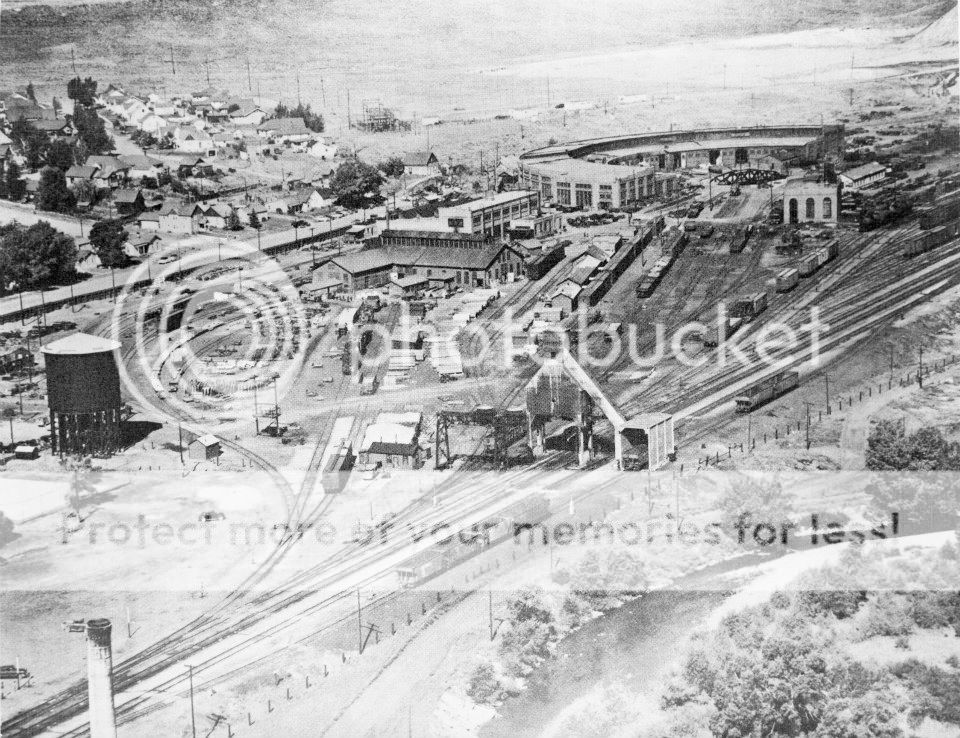Historic Roundhouse & Railyards
-
Difficulty:
-

-
Terrain:
-

Size:  (other)
(other)
Please note Use of geocaching.com services is subject to the terms and conditions
in our disclaimer.
Historic Roundhouse & Railyards 
The railroad industry is responsible for the development of Evanston and Uinta County and a key role in that development was the Roundhouse & Railyards. Today, the Roundhouse & Railyards is an attractive municipal facility, which is highly popular as a venue for a wide variety of events. It is a highly recognizable landmark in the city of Evanston. The Roundhouse & Railyards has not always been in the spotlight, however, and it has had a long, interesting road to its current condition and purpose. In the mid-1860s, The Union Pacific Railroad was in the process of extending its main line westward from Omaha Nebraska. This line would eventually link with the Central Pacific line to form the transcontinental railroad. As the line progressed, settlements were needed about every 100 miles to support the construction efforts. In 1868, Evanston sprang up as one of these settlements. In 1870, the Union Pacific Railroad decided to make Evanston one of it’s service points for the main line, and constructed a stone service facility known as a “roundhouse.” By 1912, however, the stone building was inadequate for the railroads’ needs, and a larger complex was completed in 1914. The roundhouse and machine shop that still stand today were constructed during this time. For the next 12 years, the facility at Evanston was the main repair location for Union Pacific locomotives. The complex, which had become known as “the shops” by then, was the largest employer in Evanston. Everyone in town was tied to the shops in some way. Nearly everyone had friends or family that worked in the shops. Change came in 1925, when the Union Pacific announced that it would be closing the service facility in Evanston. Locomotives could now make the 176-mile journey from Green River, Wyo. to Ogden, Utah without needing service. This announcement was a major blow to the small community of Evanston. The service facility was still the largest employer in town, and many people would lose their jobs. The local economy would certainly be devastated. Concerned for their way of life, the citizens of Evanston assembled a committee to travel to the Union Pacific headquarters in Omaha, to convince the railroad’s leadership that the shops in Evanston should remain operational. The committee’s appeal was effective, and swayed company officials. They later announced that the complex in Evanston would re-open in 1926 as the main repair, reclamation, and manufacturing location for the entire Union Pacific rail line. Starting in 1926, the Evanston facility began to grow. More and more employees were added. Union Pacific employees came to Evanston from other states to work in the shops. During the mid-1940s, the complex was at its most busy, employing over 200 workers. As simpler diesel engines began to replace the older, more complicated steam models, business at the shops gradually slowed. This caused a decrease in demand for workers. The Union Pacific decided, after noting a decline in efficiency during the1950s and 60s, to close the repair facility. In December of 1971, with less than 100 employees on the payroll, the shops closed for good. Union Pacific deeded the buildings of the complex to the City of Evanston in 1972. Over the next 26 years, Evanston leased the buildings to a series of rail-car repair companies. The last company moved out in 1997, and the shops were once again vacant. Around this time, the City of Evanston had begun evaluating the condition of the shops. City planners not only recognized that the complex was a fundamental part of Evanston’s history, they also knew that it was an important part of national history as well. They began to create a “master plan” for restoring the complex. They hired an architectural firm to come up with a plan for refurbishing the buildings. Another task was to identify sources of funding for such a large project. Of immediate importance was the need to repair or replace the roofs of the machine shop and the roundhouse, as well as provide seismic upgrades. In 1998 Roundhouse Restoration Inc., a non-profit organization whose mission is to foster support for the project, held it’s first “roundhouse festival.” It was a big success that attracted a large number of visitors to Evanston. The Urban Renewal Agency of the city, which holds an annual ball to raise funds for various city projects, also helped generate interest in the restoration of the complex. The Roundhouse & Railyards, with its unique history, is truly a treasure for the citizens of Evanston, as well as for the rest of the country. The complex was placed on the National registry of Historic Places in 1984. The complex is unique because it contains the only standing roundhouse on the Union Pacific main line between Omaha and Sacramento California. Train enthusiasts and tourists from all over the world come to Evanston to see this historic part of American history.
Additional Hints
(Decrypt)
Oynpx anab ba gur envy. Hfr lbh unaqf, abg lbhe rlrf.